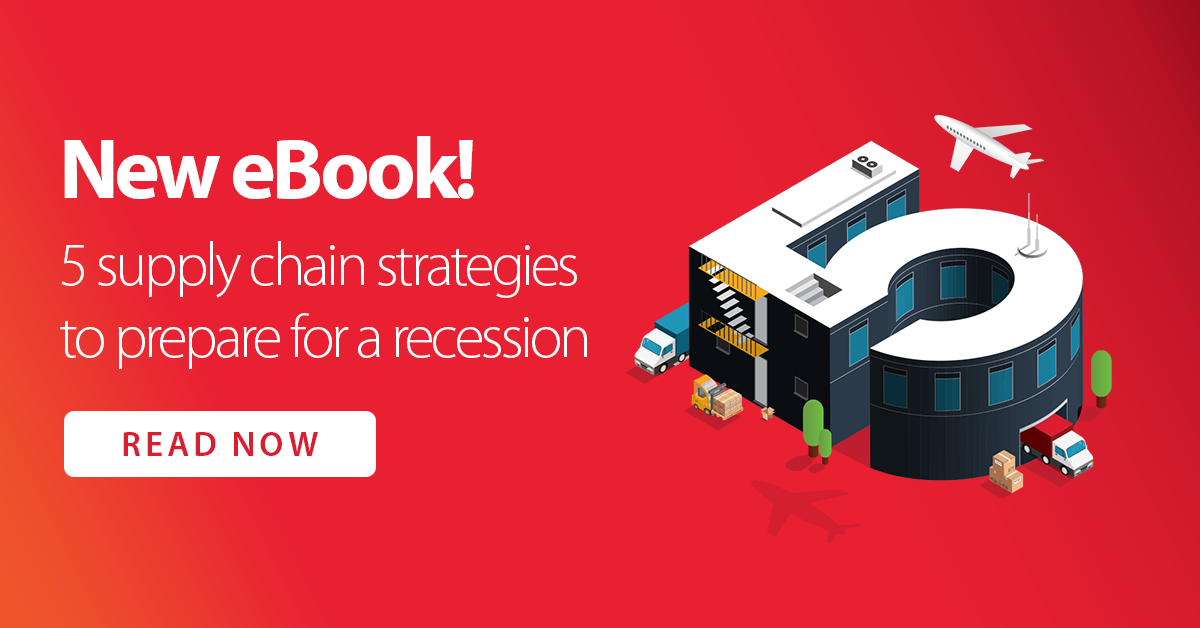As the saying goes, there’s no rest for the weary. Even with the supply chain impacts of COVID-19 winding down, another threat looms on the horizon. Recession, the once-in-a-decade crisis that disrupts lives and transforms global commerce, is possibly looming. Inflation rates are skyrocketing. Currency values are plummeting. Discretionary spending is slowing. It’s time to brace for changes that will have a lasting impact on your business and your supply chain.
But preparing for change doesn’t have to mean bracing for the worst. Readying your supply chain for recession now will give you the opportunity to thrive through disruption and chart a brighter future for your company for years to come.
Make the business case for change
Recent experiences have revealed the risks of impaired supply chain performance, particularly to the C-suite. In a 2020 McKinsey survey, 92% of supply chain executives said they intended to make supply chains more agile as a result of pandemic-related demand and supply disruptions. However, one year later, executives reported taking measures that added costs and risks for businesses and exacerbated supply chain challenges. These included increasing inventories and taking steps to regionalize production.
Resilience and agility aren’t out of reach, though. As you prepare for the next round of disruptions, look to another set of supply chains for inspiration. During the pandemic, businesses with advanced supply chain planning practices and technologies grew revenue by 2% – that’s compared to a 3% decline for their industry peers, according to research conducted by Dr. Morgan Swink of Texas Christian University These companies also saw their stock price increase by three times more than the industry average. Recent research has shown that even after peak pandemic disruption, these companies continued to see higher revenues and better performance across key financial metrics like return on assets (ROA) and costs of goods sold (COGS), among others.
The key to success throughout these shifts was adoption of concurrent planning techniques. Concurrent capabilities increase the agility of your supply chain by removing functional silos and eliminating reliance on Excel-based planning. They bridge the gap between planning and execution by interweaving every aspect of your business – from strategic to tactical. With end-to-end transparency, your planners know sooner and act faster, giving them the agility to respond to disruptions in real-time.
These changes are not only transformational to your supply chain planning processes and business; they also drive results quickly and can be implemented in as few as 12 weeks. You can reduce risks to your supply chain today, ensure your business is recession-ready for 2023 and build the foundation for future success.
Create gains that outlast a recession
Companies that embark on a concurrent planning journey now will discover it’s not just about surviving as a business, but thriving. Supply chains have increasingly become a strategic lever, supporting other company-wide initiatives like meeting sustainability and emissions objectives, accelerating integration after acquisitions, opening operations in new markets and more. Establishing a foundation for agility and end-to-end transparency ensures that the supply chain informs better decision-making across the business and empowers decision-makers to act in a timely, impactful manner.
Discover how you can get bring advanced planning into your business’s recession-readiness strategy. Read our eBook, 5 strategies for a recession-ready supply chain, to start preparations today.
Additional Resources
- Concurrent planning frequently asked questions
- Supply planning frequently asked questions






